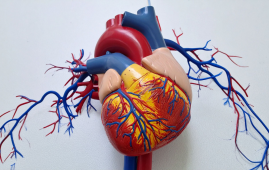

A simple blood test that can quickly detect the source of a child’s illness could be “transformative,” according to researchers. An international team led by Imperial College London researchers has developed and validated a diagnostic approach capable of simultaneously detecting and distinguishing between 18 infectious or inflammatory diseases, including childhood fever, group B streptococcus (GBS), respiratory syncytial virus (RSV), and tuberculosis, with the potential to provide a result in a fraction of the time required by current diagnostic tests.
The test could allow medics to detect the source of childhood fever based on the distinctive pattern of genes being “switched on or off” by the body in response to specific illnesses using a single blood sample. While current testing for some illnesses can take hours, days, or even weeks, a test based on this approach could provide a response in less than 60 minutes.
Childhood illness diagnosis
The researchers explain that, while their study demonstrates that the method works, a diagnostic test based on patients’ gene expression could drastically improve the diagnosis of childhood diseases, reduce delayed and missed diagnoses, and have a significant impact on health care, particularly in developing countries.
The early findings, published today in the journal Med for the first time, draw on more than a decade of research into detecting and diagnosing illnesses based on gene expression patterns. The DIAMONDS consortium, directed by Imperial College London, was established in 2020 as a result of this fundamental study.
Professor Michael Levin, Chair in Pediatrics & International Child Health within the Department of Infectious Disease at Imperial College London, and co-senior author of the paper, explains, “Despite huge strides forward in medical technology, when a child is brought into hospital with a fever, our initial approach is to treat based on the doctors’ ‘impression’ of the likely causes of the child’s illness.”
“As clinicians, we need to make rapid decisions on treatment, often just based on the child’s symptoms, information from the parents, and our medical training and experience,” he adds, “but we may not know whether a childhood fever is bacterial, viral, or something else until hours or days after a child has been admitted, when their test results come back.”
“Such delays can stop patients getting the right treatment early on, so there is a clear and urgent need to improve diagnostics. Using this new approach, once it’s translated to near point of care devices, could be transformative for health care.”
Infectious and inflammatory disorders are the most common reasons for children seeking medical attention in hospitals, primary care offices, and community clinics. However, with broad symptoms such as fever, clinical teams may struggle to distinguish bacterial infections, which can be potentially fatal, from other, less serious causes.
Patients are frequently given broad-spectrum antibiotics until a bacterial infection is ruled out. However, this method leads to widespread antibiotic abuse, which contributes to antimicrobial resistance and an increase in drug-resistant illnesses.
The vast majority of diagnostic tests are aimed at detecting infections, such as lateral flow tests (LFTs) for SARS-CoV-2, HIV, or Influenza, or blood cultures to confirm the presence of bacteria or yeast. However, LFTs can only provide a yes or no answer for one of the possible causes of the disease, and blood cultures can take up to 72 hours to provide valid results.
Researchers investigated a method for determining the pattern of a patient’s gene expression in blood that happens in response to various infections and inflammatory diseases in the newest study. The researchers was able to identify which critical genes were switched “on” or “off” in response to a variety of illnesses using data from hundreds of patients (including more than 1000 children with 18 infectious or inflammatory diseases), establishing a molecular signature of disease.
Learning by machine
Machine learning was then used to determine which gene expression patterns connected to specific disease locations and infections, concentrating on a panel of 161 genes for 18 diseases. This panel was verified further in a cohort of 411 pediatric patients brought to the hospital with sepsis or severe infections (covering 13 of the 18 disorders), in which gene expression was recorded via blood analysis and diagnoses were established using current gold standard clinical procedures.
New diagnostic tests cannot be evaluated in a clinical context until they are approved, as some misdiagnoses, such as failing to detect a life-threatening bacterial infection, can have serious implications. Instead, a ‘cost sensitive’ measure based on consensus from a panel of five clinical experts was used to illustrate where the test may be utilized to avoid misdiagnosis and where this would have the greatest impact.
Dr. Myrsini Kaforou, Senior Lecturer within Imperial’s Department of Infectious Disease and co-senior author of the paper, said, “This body of work has enabled us to identify the molecular signature of a wide range of diseases based on 161 genes, out of thousands of genes in the human genome. By distinguishing between many diseases at the same time within the same test, we have developed a more comprehensive and accurate model that aligns with the way clinicians think about diagnosis.”
“With this initial proof-of-concept study, we’ve been able to show that our multi-disease machine-learning diagnostic approach works. This kind of advance is only possible through interdisciplinary collaboration and large research consortia, which bring together expertise from infectious disease, molecular science, and bioinformatics.”
“There is still much work to be done to progress this test to the clinic, but we are working towards it. A future diagnostic test based on this approach could help provide the right treatment, to the right patient, at the right time, while optimizing antibiotic use, and reducing lengthy time to diagnosis for inflammatory diseases.”
Following steps
The researchers emphasize that a functional test is not currently ready for clinical use, and that their RNA transcript panel would require more customization, testing, and translation into a useable platform/device before regulators would approve it.
They highlight one potential benefit of their approach, which could aid in the rapid diagnosis of respiratory illnesses such as bacterial pneumonia or tuberculosis—while a pathogen-based blood test may not be effective (because the pathogen is in the lung, not the blood), a host-based test could still detect the tell-tale molecular signature it leaves in the patient’s blood via gene expression.
The method will be tested in thousands of patients in hospitals across Europe, Africa, and Asia as part of the multinational, multi-partner DIAMONDS project. This phase will compare the new approach to the current gold standard for clinical diagnosis and determine its likelihood of influencing clinical decision making.
Dominic Habgood-Coote, a Research Associate within the Department of Infectious Disease at Imperial College London, and first author of the paper, said, “Using host transcriptional responses to disease is appealing for the diagnosis of fever in children, in whom traditional diagnostic approaches are particularly difficult. We have shown our approach is useful in answering narrowly defined clinical questions, but there is a clear benefit to expanding it to include a wider range of diseases and more detailed classification.”
Professor Levin added, “Fundamentally, I’m a clinician, and the reason we do research is that we want something better for the patients. I think the excitement around this platform is the clinical implication. If we can move it into clinical use, it really could transform health services.”
more recommended stories
 Citrus and Grape Compounds Help Prevent Type 2 Diabetes
Citrus and Grape Compounds Help Prevent Type 2 DiabetesA new clinical trial highlights the.
 Personalized Pain Care Transforms Parkinson’s Treatment
Personalized Pain Care Transforms Parkinson’s TreatmentNew UniSA research underscores the urgent.
 Genetic Diversity Explains Obesity Risk Differences
Genetic Diversity Explains Obesity Risk DifferencesCross-ancestry Study Identifies Novel Obesity Genes.
 Meniscal Tear and OA Pain Improved by Home Exercise
Meniscal Tear and OA Pain Improved by Home ExerciseHome Exercise Proves Effective for Knee.
 AI ECG Model Outperforms Standard STEMI Triage
AI ECG Model Outperforms Standard STEMI TriageNovel AI ECG Model Outperforms Standard.
 New Software Transforms Real-Time Pathogen Surveillance
New Software Transforms Real-Time Pathogen SurveillanceReal-Time Pathogen Surveillance Software Transforms Environmental.
 Bright Nights May Increase Stroke, Heart Failures in Adults
Bright Nights May Increase Stroke, Heart Failures in AdultsBright Nights are tied to increased.
 Cannabis Use Linked to Regular Tobacco in US Youth
Cannabis Use Linked to Regular Tobacco in US YouthCannabis Use and Tobacco Risk: A.
 Mediterranean Diet Reduces Endometriosis Risk in Women
Mediterranean Diet Reduces Endometriosis Risk in WomenMediterranean Diet and Endometriosis: A Promising.
 Night Shifts May Trigger Irritable Bowel Syndrome (IBS)
Night Shifts May Trigger Irritable Bowel Syndrome (IBS)Night Shifts and Digestive Health: Linking.

Leave a Comment